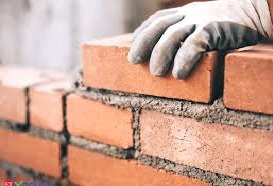Domestic cement demand is expected to increase by 18%-20% in FY22 with the volumes reaching back to around FY19-FY20 levels. This follows a sharp volume contraction witnessed in FY21, according to ICRA Ratings.
The agency has revised the sector’s outlook to stable from negative given the expected improvement in the off-take supported by rural demand, including affordable housing, along with recovery in the infrastructure segment supported by the recent budgetary allocations.
Cement production reported a 18% year-on-year contraction to 202 million MT in the first nine months of FY21. The major impact was felt in Q1 FY21 with a production contraction by 38.3% Y-o-Y owing to the adverse impact of the lockdown with the construction activities coming to a halt, primarily in April 2020.
The production increased by 16.1% month-on-month to 24.2 million MT in September 2020 and by 11.2% month-on-month to 26.9 million MT in October 2020. In November 2020, the production declined by 7.1% year-on-year to 25.3 million due to the festive season resulting in slowdown of construction activity. While there has been some improvement by 9% month-on-month in December 2020 to 27.5 million MT, it continues to remain lower by 10% year-on-year.
“Notwithstanding the expected increase in the input costs – power and fuel costs and the freight expenses, the increase in volumes and industry’s pricing discipline are likely to support the operating margins in FY2022 at healthy levels, despite some moderation. The volumetric growth is likely to result in an increase in revenues, supporting absorption of fixed costs. While a likely increase in debt levels is envisaged owing to the capacity addition, the healthy operating profits and the consequent cash accruals would allow the debt coverage metrics of major cement companies to remain comfortable,” said Anupama Reddy, assistant vice president, ICRA.
The cement prices were higher by 29% year-on-year, 4% year-on-year and 3% year-on-year in the southern, western and northern markets and lower by 4% in the eastern market in nine months of FY21, according to ICRA.



